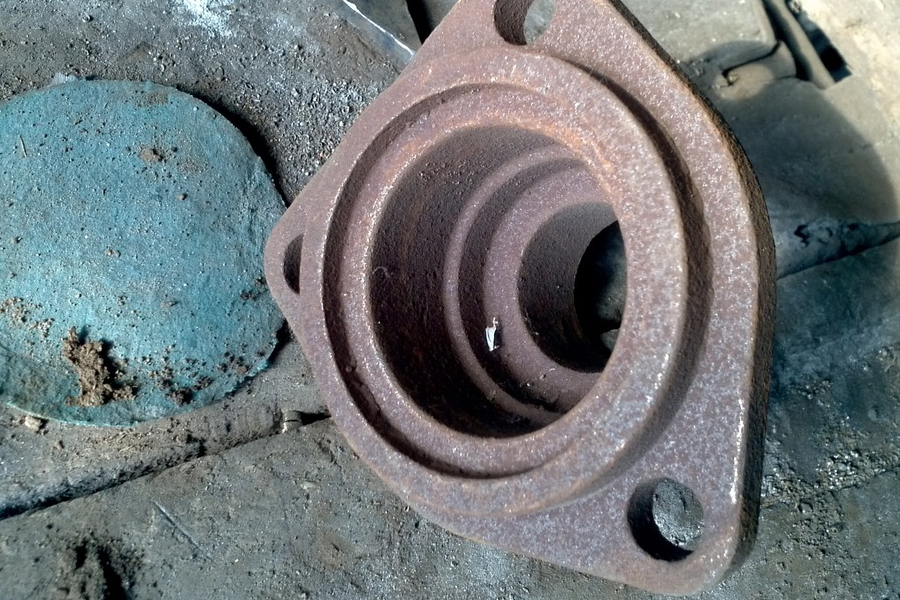Metal stamping parts are forming processing methods that rely on presses and molds to apply external force to plates, strips, pipes and profiles to cause plastic deformation or separation, so as to obtain workpieces (metal stamping parts) of the required shape and size.
Metal stamping parts are forming processing methods that rely on presses and molds to apply external force to plates, strips, pipes and profiles to cause plastic deformation or separation, so as to obtain workpieces (metal stamping parts) of the required shape and size. Stamping and forging are both plastic processing (or pressure processing), collectively known as forging. The blanks to be stamped are mainly hot-rolled and cold-rolled steel plates and strips. Stamping is mainly classified by process, which can be divided into two categories: separation process and forming process.
Metal stamping parts are mainly formed by stamping metal or non-metal sheet materials with the pressure of a press through a stamping die. It mainly has the following characteristics:
- ⑴ The metal stamping parts are manufactured by stamping under the premise of low material consumption. The parts are light in weight, good in rigidity, and after the sheet material is plastically deformed, the internal structure of the metal is improved, making the metal stamping parts Strength has improved.
⑵Hardware stamping parts have high dimensional accuracy, the same size as the mold parts, and good interchangeability. No further machining is required to meet general assembly and use requirements.
⑶In the stamping process, since the surface of the material is not damaged, the metal stamping parts have a good surface quality and a smooth and beautiful appearance, which provides convenient conditions for surface painting, electroplating, ** and other surface treatments.
Feature application
Metal stamping parts are the production technology that uses the power of conventional or special stamping equipment to directly subject the sheet to the deformation force and deform in the mold, so as to obtain product parts with a certain shape, size and performance. Sheet materials, molds and equipment are the three elements of stamping processing. Stamping is a method of metal cold deformation processing. Therefore, it is called cold stamping or sheet metal stamping, or stamping for short. It is one of the main methods of metal plastic processing (or pressure processing), and it also belongs to material forming engineering technology.
Of the steel, 50-60% are made of plates, and most of them are finished products that are pressed and pressed. Car bodies, radiator fins, steam drums of steam boilers, container shells, motors, electrical iron core silicon steel sheets, etc. are all stamped and processed. There are also a large number of metal stamping parts in instruments and meters, household appliances, office machines, storage utensils and other products. Stamping is an efficient production method. It adopts composite molds. The exception is a multi-station progressive mold. Multiple stamping technology operations can be completed on one press to complete the automatic generation of materials. The production speed is fast, the rest time is long, the production cost is low, and the collective can produce hundreds of pieces per minute, which is loved by many processing plants.
Metal stamping parts compete with castings and forgings, and have the characteristics of thinness, uniformity, lightness and strength. Stamping can produce workpieces with reinforcing ribs, ribs, buckling or flanges that are difficult to manufacture by this skilled hand to improve its rigidity. Due to the rejection of rough molds, the precision of the workpiece can reach the micron level, and the precision is high, the specifications are consistent, and holes, bosses, etc. can be punched out. In actual production, process tests similar to the stamping process are commonly used, such as drawing performance test, bulging performance test, etc. to test the stamping performance of the material to ensure the quality of the finished product and a high pass rate.
In addition to the hydraulic press for forming thick plates, the stamping equipment usually adopts a stagnant press. Focusing on the current high-speed multi-station stagnation press, set up equipment configuration decoiling, finished product collection, transportation and other stagnation, as well as mold library and quick mold change placement, and use the computer French tube bundle to form a passive stamping production with high production rate and high production rate. String. Under the condition of producing dozens or hundreds of metal stamping parts every minute, the copper stamping and outputting processes are completed in a short period of time, and personal, equipment and quality incidents often occur.
